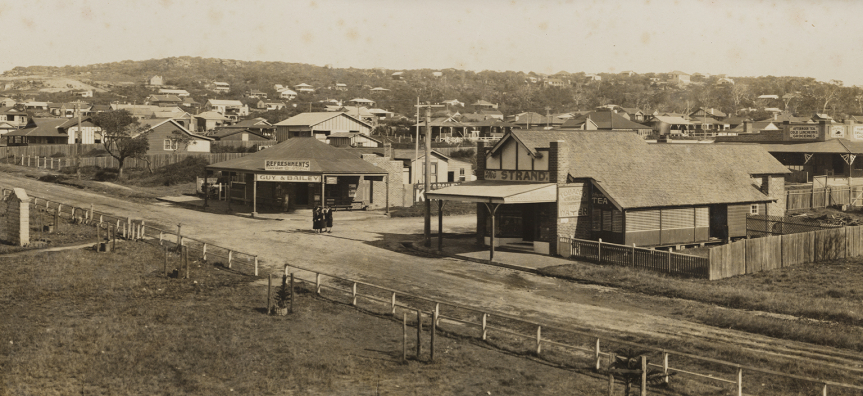
Our Local Studies team recently assisted with the installation of a large-scale panorama photograph of Dee Why’s main promenade. The chosen photograph was taken by Pitt Studios c1923-24 and is part of the State Library of New South Wales’s collection.
Although the large-scale reproduction includes a number of landscape elements still identifiable today, such as the Norfolk Pines and the War Memorial, it also provides a sense of the change that has occurred to the natural and social landscape over the last hundred years.
Almost every section of the photograph was examined by our Local Studies team to provide a historical snapshot of what you can see so let’s explore what was happening in 1920s Dee Why.

The rock pool
In 1915, members of the Dee Why Surf Life Saving Club (SLSC) were responsible for carving a 20-foot square rock pool out of the rock shelf at the southern end of Dee Why Beach. Enlarged baths were opened in December 1919 but were further enlarged when Warringah Council took over the pool.
In 1922, the Dee Why Ladies Amateur Swimming Club was formed, one of the oldest ladies’ swimming clubs in NSW. They raised funds to erect a clubhouse and amenities block for their members which opened on 1 October 1923.
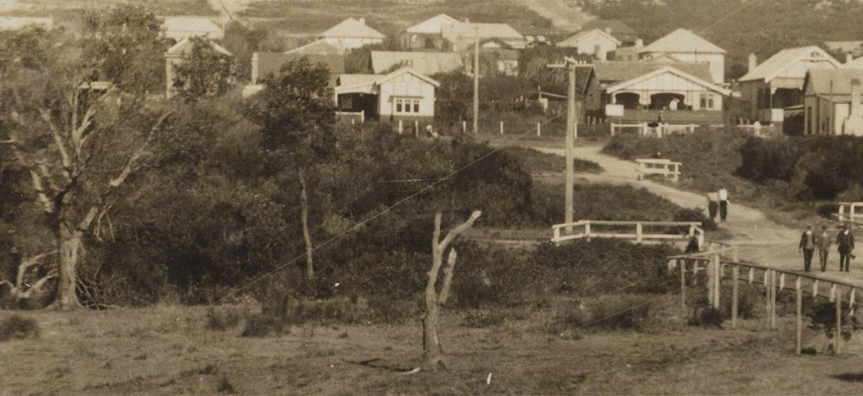
The Oaks
At the southern end of The Strand, a bridge can be seen crossing a creek that runs through a small remnant grove of She-Oak trees. These trees laid on a 90-acre farm, known as The Oaks, which ran from Pittwater Road to today’s Wheeler Parade and was originally owned by James Wheeler. The grove also inspired the original name of Dee Why Headland as it was once called Oaks Point.
Today, the only trace of The Oaks is in the name Oaks Avenue.
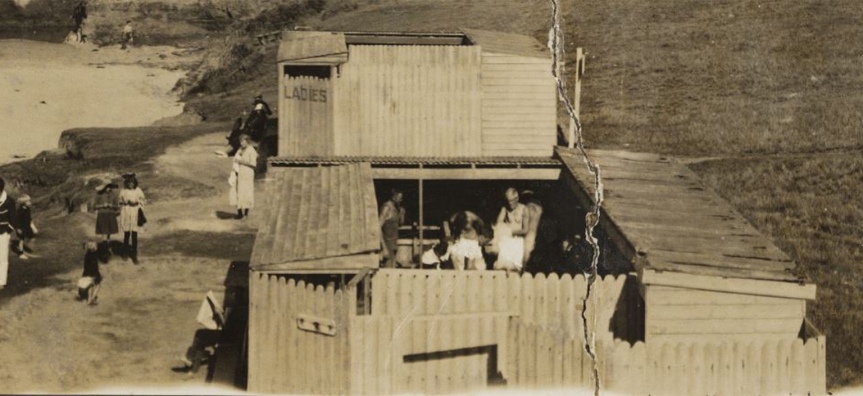
Dressing sheds
These primitive dressing sheds on the beach were segregated for men and ladies. They were used until 1921 when the SLSC created new rooms in their building.

War Memorial
The Dee Why Beach War memorial was unveiled in 1917. It was erected by the Dee Why SLSC and recorded all members who served in World War I, not just those who died.
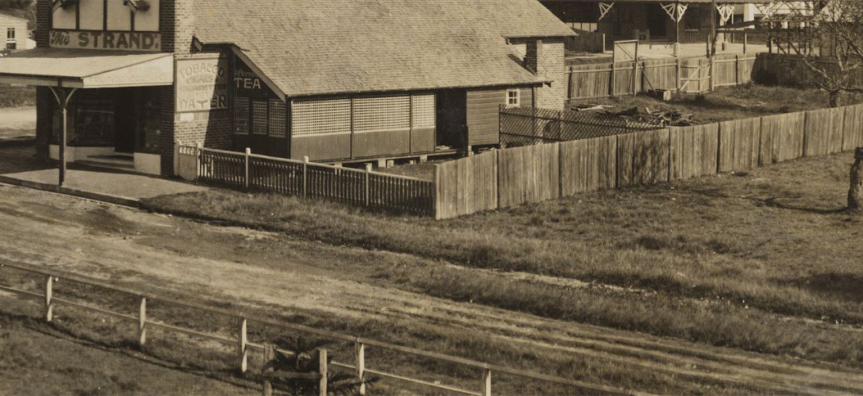
No cars!
There were very few cars in Dee Why at this time.
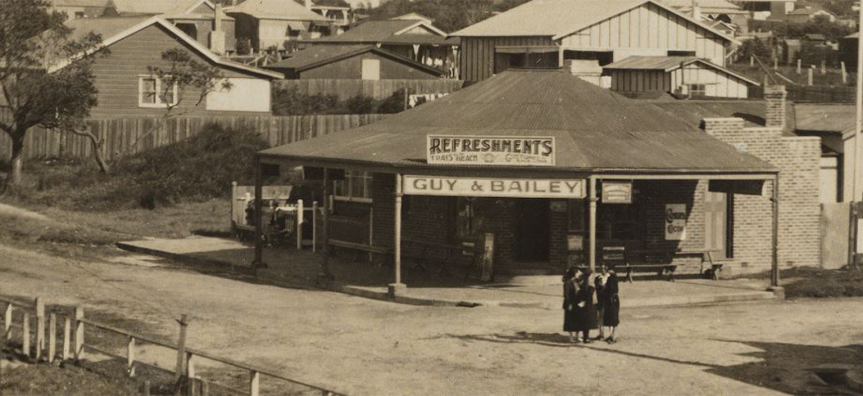
Guy and Bailey’s store
The store was established pre 1920 by James and Mary Bailey who were later joined by their daughter and son-in-law, Tom and Gladys Guy. Dee Why was a developing holiday destination so the store catered for both residents and holiday makers. They delivered groceries, had swimming costumes for hire and sold afternoon teas and hot water. In 1925, the store increased to include holiday flats, a restaurant and milk bar. For some time, their store was the only place in Dee Why where a meal could be obtained.
The family owned the store well into the 1950s.
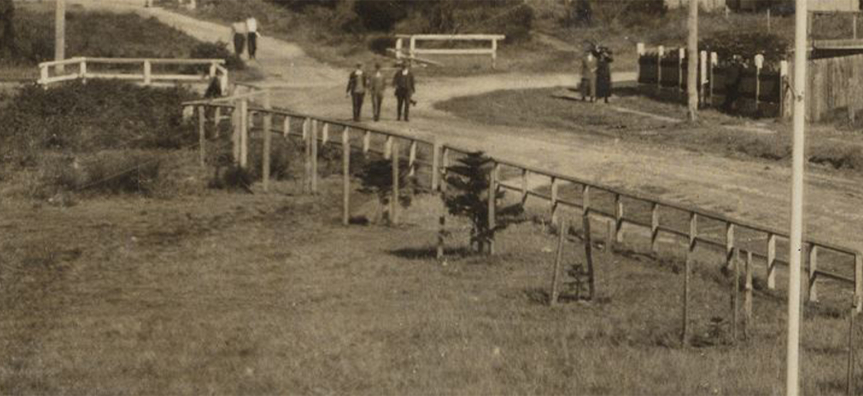
Freshly planted pines
Local residents carried out much of the voluntary work during this time, looking after the beach and surrounding areas. This included the planting of the pine trees on the beach front reserve.
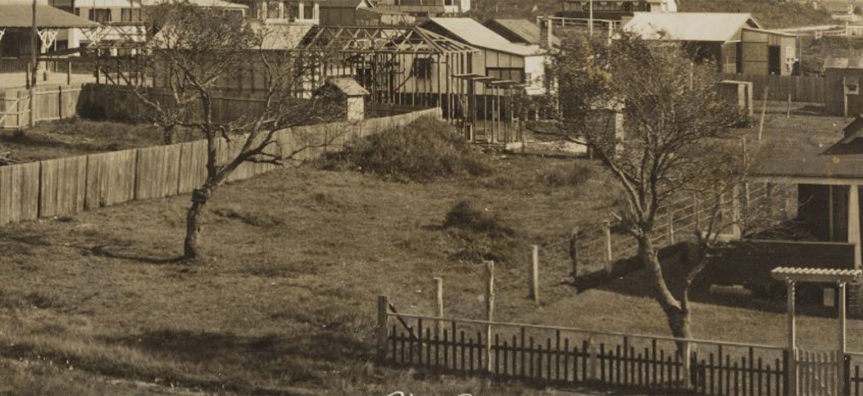
The land on the Strand
In 1946, the Dee Why SLSC purchased land in The Strand opposite their existing Surf Club, at a cost of 1,270 pounds. They allowed caravans to park on it which helped the SLSC pay off the loan for the purchase of the land.
The site was very popular, with caravans arriving from all over Australia. Originally this land was to be for a new clubhouse however it was considered too far from the beach and was eventually sold.
You can delve further into this image by browsing the Dee Why Panorama collection in History Hub.
